
Labels
Labels
Labels from Labelprint24.com are versatile and high quality stickers that mark your products individually and professionally and are produced exactly to your specifications.
- First-class quality and state-of-the-art production
- Professional label manufacturer since 1961
- Personalised online support
Discover the wide range of labels from Labelprint24.com!
-
ProductionFrom 2 days
-
MaterialFoil / Paper
-
Format100% Free
-
OptionFoil finishingVarnish
Select kind of product
1 Labels for every requirement
A good product should be immediately recognisable - and individual labels help you visually stand out from the competition. Labelprint24's label printing offers just that and a whole host of other options. For labels are used in a wide variety of areas with completely different requirements, which is not just about the look alone. Our products can be adapted to the application for special needs in all these use areas from the material to the printing method.
Labelprint24 manufactures top quality labels for industry, administration, trade and commerce. As an experienced manufacturer and reliable supplier, we offer professional labelling solutions for all industries. Guaranteed you will find the perfect label for your individual requirements!
-
TOP quality from our own production
-
A particularly wide variety of materials
- Instant online price calculation for all labels
-
48h express production and fast delivery
-
Online support and personal advice
-
Extra discounts for major customers and resellers
1.1 Convince yourself of the proven quality of the market leader for digitally printed labels!
1.2 Customer-oriented solutions and process optimisations made to measure
With our fully automated ordering and production process, we have always been able to offer our customers top prices and the highest quality. Labelprint24 stands for customised solutions and customised process optimisations. A typical example of successful cooperation with our customers is shown in the following case study.
2 Our service
- A team of competent consultants
- Online support throughout the ordering process
- Short production and delivery times
- On request, almost all appointment requests can be realised
- Check your print data for printability
The change from a label supplier to a system supplier has allowed the product portfolio of individually manufactured packaging products to grow steadily. Today, our customers throughout Europe receive a wide range of packaging materials directly from one source: labels, folding boxes, leaflets, laminate tubes and outer packaging made of cardboard. All products in high quality and with a competitive price-performance ratio.
3 The variety of label printing
Regardless of their field of application, labels must meet the highest requirements in various areas: this applies to the product variety as well as to the design, which always offers the individually optimal result for our customers. As a label printing specialist with many years of international experience, Labelprint24 has a comprehensive yet growing range of different products that are ideal for both business and home use.
3.1 Roll labels
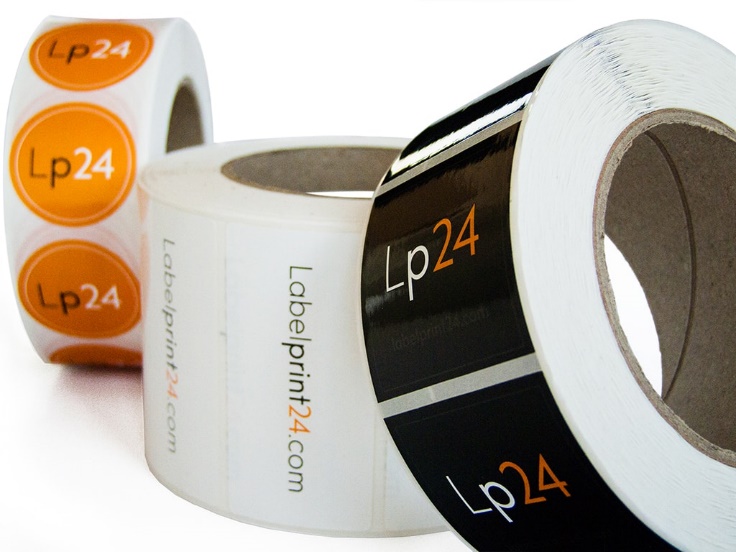 Printed labels on rolls are the all-rounder among the labels. They are short-life or long-life as needed, resistant to water, scratches, UV radiation or chemicals and, last but not least, can be used when handling food. That is precisely why they are used in the chemical industry as well as in the food, beverage or cosmetics sectors, just to name a few commercial sectors that value roll labels in all their possible formats and materials.
Printed labels on rolls are the all-rounder among the labels. They are short-life or long-life as needed, resistant to water, scratches, UV radiation or chemicals and, last but not least, can be used when handling food. That is precisely why they are used in the chemical industry as well as in the food, beverage or cosmetics sectors, just to name a few commercial sectors that value roll labels in all their possible formats and materials.
The basic idea behind the labels on rolls is the highest possible speed when sticking. For this purpose, the printed labels are wound on a roll core made of sturdy cardboard, which is then inserted into a manual or automatic label dispenser with a corresponding diameter. Especially for an industrial use, the time saved thereby without loss of secure liability means a business advantage. If you want to order roll labels with especially variable barcodes, barcodes or other numbering, our barcode label calculator is the right one for you.
3.2 Sheet labels
 In contrast, sheet labels are available for use on a smaller scale and without the requirements associated with industrial labelling. They are hardly less diverse than roll labels but are often used in other areas. As a sticker, they are used, for example, in the household to provide order by labelling boxes, folders, CDs, DVDs and much more, they carry addresses in the parcel and mail, provide as advertising for the desired attention or are popular art and collectible objects.
In contrast, sheet labels are available for use on a smaller scale and without the requirements associated with industrial labelling. They are hardly less diverse than roll labels but are often used in other areas. As a sticker, they are used, for example, in the household to provide order by labelling boxes, folders, CDs, DVDs and much more, they carry addresses in the parcel and mail, provide as advertising for the desired attention or are popular art and collectible objects.
Since sheet labels do not depend so much on fast gluing, but rather on the optimal transportability and the possibility of printing blank labels themselves and individually, they are applied on a practical sheet. This allows easy handling, which doesn't require a label dispenser.
3.3 Blank labels - just as you need them
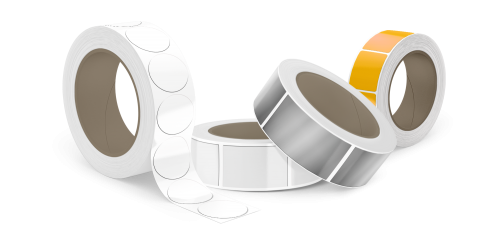 As an alternative to our high-quality printed labels, we also offer blank labels in various versions. This means that you have all the materials and the usual quality in terms of stability and processing available. Blank labels can be used for both water-based inkjet printing as well as for direct thermal or thermal transfer printing – you can then design the print according to your individual wishes and ideas.
As an alternative to our high-quality printed labels, we also offer blank labels in various versions. This means that you have all the materials and the usual quality in terms of stability and processing available. Blank labels can be used for both water-based inkjet printing as well as for direct thermal or thermal transfer printing – you can then design the print according to your individual wishes and ideas.
Multi-layer labels - for more space on the product
3.4 Sandwich labels
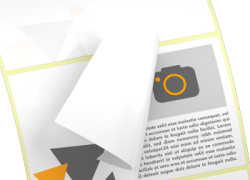 Roll labels and sheet labels come in single-layer designs. This means that the desired information is applied only on the show side. Depending on the format or product, however, the space for all product information is quite limited and a single-layered label is therefore not sufficient. So when it gets more complex in content, multi-layered labels best fulfil the goals. We offer different variants to make possible a tailor-made solution.
Roll labels and sheet labels come in single-layer designs. This means that the desired information is applied only on the show side. Depending on the format or product, however, the space for all product information is quite limited and a single-layered label is therefore not sufficient. So when it gets more complex in content, multi-layered labels best fulfil the goals. We offer different variants to make possible a tailor-made solution.
Sandwich labels are the "smaller" solution: they offer 2 to 3 sides, on which more extensive information can be accommodated. Incidentally, other names are peel-off, duplex or double-layer labels, which explains the underlying principle as far as possible: This is to a certain extent a (peelable) label on a label. The substrate label has an additional adhesive surface, the allows the upper paper or the top film to be easily removed. Competitions or special promotions are classic occasions to use sandwich labels.
3.5 Booklet labels
 Booklet labels are also suitable for these purposes. However, since they can contain up to 24 printed pages, they are especially a "substitute" for product brochures or package inserts, as are common in the pharmaceutical and chemical sector. However, they can just as well come as a recipe book in small format.
Booklet labels are also suitable for these purposes. However, since they can contain up to 24 printed pages, they are especially a "substitute" for product brochures or package inserts, as are common in the pharmaceutical and chemical sector. However, they can just as well come as a recipe book in small format.
All necessary information for the safe handling of the respective product can be attached so firmly to this. Information on dosages, safety precautions, etc. for medicines, food supplements, cleaning or fertilizers and many other products with increased safety requirements are available at any time. We offer booklet labels for a wide variety of containers, so that they always meet the highest demands in their handling.
3.6 Labels or stickers?
The question is, is there any difference between labels and stickers? After all, both terms are even listed in Duden as synonyms. The fact that self-adhesive labels are commonly referred to as adhesive labels is also no help. Even in production and the materials used there are more similarities than differences: the base is always paper or plastic, the print is on one side, the glue on the other.
The difference, however, is the purpose for which labels and stickers are predominantly used. Labels are typically associated with a particular product and the associated labelling requirements. This can be, for example, information about nutrients contained in foods or hazard warnings for chemicals. For stickers, the information is not necessarily in the foreground. This is primarily about attracting attention - for example as an advertising medium, decorative element or sticker.
In our range, you will find a variety of labels for different products: Whether industrial labels or chemical labels, Safety labels, Deep-freeze labels, Food labels, Bottle labels, Thermal labels, cosmetic labels, special labels for particular situations, Wrap labels for round packaging or QR and barcode labels – we offer you the optimal solution for your needs.
4 Our packaging – individual solutions made to measure
In addition to our high-quality labels, our range includes a number of different packaging solutions, which can also be individually tailored to our customers - for example with boxes in your familiar corporate design.
Our extensive product range is completed with leaflets and leaflets, which we offer either unfolded (flat) or folded in a wide variety of formats (zigzag, spiral fold or transverse fold). For the marketing area, we carry various printed beverage cans and bottles, which are a popular advertising medium due to the large number of available materials and finishes as well as the individual design at each event.
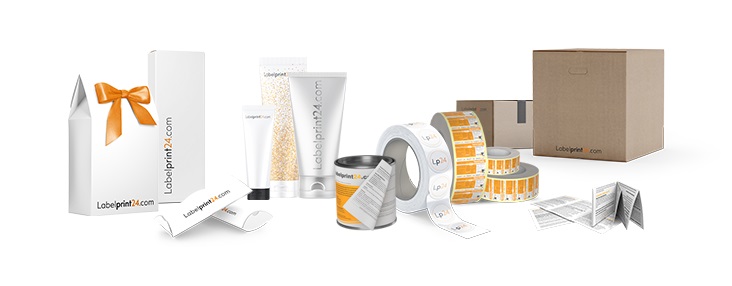
 Folding cartons are available in different designs. Whether standard folding box, folding box, pillow case, bag box, counter display, slipcase, hanger box, cardboard slipcase, cardboard section, carrying handle box or dispenser box for labels – all variants ensure a secure packaging of the products and can, with the possibility of individual printing, at the same time be the desired eye-catcher for the customer.
Folding cartons are available in different designs. Whether standard folding box, folding box, pillow case, bag box, counter display, slipcase, hanger box, cardboard slipcase, cardboard section, carrying handle box or dispenser box for labels – all variants ensure a secure packaging of the products and can, with the possibility of individual printing, at the same time be the desired eye-catcher for the customer.
Boxes made to m easure are an optimal solution, especially for mail order. The corrugated cardboard used by us offers an ideal combination of low weight and robustness – whatever is shipped by you is protected against damage in transport or on incorrect storage. All variants – folding cartons, folding box cartons, crosswise packaging, hinged-lid boxes and shipping boxes with adhesive strips – can be precisely tailored to meet specific requirements. The clear advantage for you and your customers: Less packaging waste due to customised shipping cartons, no double packaging, no filling material.
easure are an optimal solution, especially for mail order. The corrugated cardboard used by us offers an ideal combination of low weight and robustness – whatever is shipped by you is protected against damage in transport or on incorrect storage. All variants – folding cartons, folding box cartons, crosswise packaging, hinged-lid boxes and shipping boxes with adhesive strips – can be precisely tailored to meet specific requirements. The clear advantage for you and your customers: Less packaging waste due to customised shipping cartons, no double packaging, no filling material.
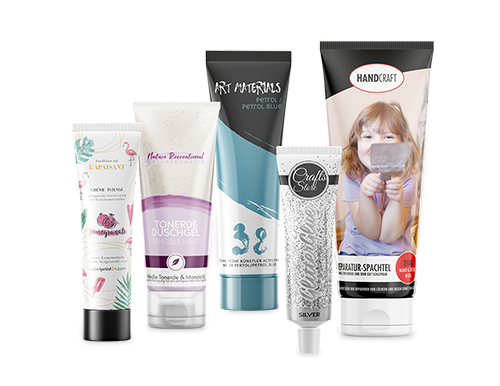 Laminate tubes represent a further development of commercially available aluminium or plastic tubes, in which all advantages are combined in a single packaging solution. Pasty or semi-liquid products are well protected by the different layers of the laminate tubes and are perfectly presented in the variety of printing and finishing options. The laminate tubes provide optimal storage not only for cosmetics and toiletries, but also for pharmaceutical commodities or products from the home improvement area (adhesives, glue, etc.) or food area (mustard, mayonnaise, ketchup, etc.)
Laminate tubes represent a further development of commercially available aluminium or plastic tubes, in which all advantages are combined in a single packaging solution. Pasty or semi-liquid products are well protected by the different layers of the laminate tubes and are perfectly presented in the variety of printing and finishing options. The laminate tubes provide optimal storage not only for cosmetics and toiletries, but also for pharmaceutical commodities or products from the home improvement area (adhesives, glue, etc.) or food area (mustard, mayonnaise, ketchup, etc.)
5 Application areas of labels
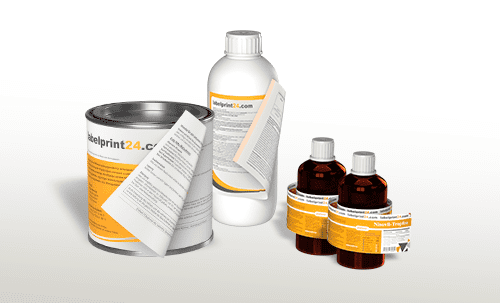 In several places, we have already pointed to the versatility of our labels, which allow the use in different industries and fields of application. Labels therefore make a significant contribution to safety at work, not least because of their use to label hazardous substances or sign potential safety risks. They provide information on and on products, serve to mark goods, and are also used in the office in various places.
In several places, we have already pointed to the versatility of our labels, which allow the use in different industries and fields of application. Labels therefore make a significant contribution to safety at work, not least because of their use to label hazardous substances or sign potential safety risks. They provide information on and on products, serve to mark goods, and are also used in the office in various places.
Although requirements can vary widely by industry, label printing can be adapted to many eventualities. Resistance to be able to survive at the lowest temperatures, wet or high abrasion is therefore just as important label quality as the secure grip on almost every conceivable surface, from sensitive food to containers for transport by sea.
Printing labels is a challenge in these circumstances, for which the right production process and quality materials are key factors in delivering the desired results in all conditions. Both our film and paper labels meet all the expectations placed on them due to the best quality and sophisticated processing options.
Now choose labels for your area of application!
6 Label materials
Depending on the particular field of application, labels must also be able to fulfill different requirements with respect to their nature. For this purpose, we use a variety of materials to print our labels. This ensures that they can do their job optimally in any environment.
6.1 Materials for film labels
Plastic films for label printing are ideal for outdoor use because they are basically dirt and water repellent and, in addition, do not deviate from their quality even under the most adverse environmental conditions. This is mainly due to the different compositions of film and adhesive labels, which offer the optimum solution for every environment.
Film labels can therefore be used for storage under various conditions, as well as during transport. They can also be applied to a variety of containers and even comply with the strict migration regulations, as they apply to the handling of food. It completely does not matter which external influences or which characteristics of the product packaging to be labelled have to be considered – film labels are ideally suited in all situations.

- Polyethylene labels consist of polythene film so they can be used both inside and outside. Weather conditions, heat and cold pose no problems, only UV radiation tolerate the PE labels for too long periods less well.
- Polypropylene labels made from polypropylene film have the same characteristics as polyethylene labels, thanks to their high resilience, being especially used for high strength rigid containers and round containers.
- PVC labels, which are produced from polyvinyl, offer once again better protection against external influences. Like PE and PP labels, they are insensitive to cold, heat and weather, but are also resistant to the effects of dirt, oils, fats and chemicals. For outdoor use, PVC labels are also recommended for their UV resistance and their resistance to seawater.
- PET security labels made of polyethylene terephthalate, as a tamper-proof label, protect against theft or other misappropriation of goods, for example, in mail order. There, they also ensure the perfect condition of goods shipped with a transfer protection.
All film labels are available in different combinations of film and adhesive to cover the widest possible range of applications. The wide range of finishing options, such as hot foil stamping for a particularly elegant appearance or additional matt varnish, which helps to achieve a natural feel, also contribute to this.
6.2 Materials for paper labels
Paper labels are less robust than film labels and are therefore primarily intended for use in dry indoor areas. However, with a special protective laminate, they can also be prepared for outdoor use because the protective layer can also make the paper labels smudge and scratch resistant and make them much more resistant to environmental influences
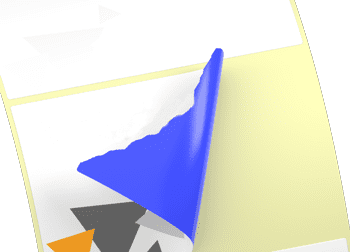
- Label paper in white is suitable for all product categories from roll labels via barcode labels to booklet labels. Optionally, we offer matt or glossy paper, on request also opaque for opaque labels.
- Thermal paper for direct printing is especially used in the food retail trade and in the labelling of stored goods, both short term and long term. The thermal labels are also suitable for being printed with a thermal direct printer according to your individual requirements.
- Metallised paper in silver or gold is especially eye-catching, for example, for promotions events. In addition to the color, the gloss effect ensures that these paper labels never fail to impress.
- Fluorescent paper is especially suitable, due to the available neon signal colors of green, red, orange and yellow, for warnings, price labels or any other situation where the important information on cardboard boxes or packaging should be highlighted.
In addition, paper labels for printing with laser and inkjet printers as well as for water-based inkjet printing are part of our product range. These variants can also be subsequently printed with the mentioned printers.
6.3 Label adhesives
Everyday labels have become indispensable, but that does not make them an everyday product: Rather, our labels are versatile, adaptable and always eyecatchers - in any environment in which they are used. Adhesive properties and print quality meet even the most demanding requirements. This applies to functionality as well as to look and feel.
6.4 Structure of labels
The structure of the labels is basically the same. In the simplest variant, the adhesive bond, i.e. the composition of the individual components of a label, consists of three layers:
- The substrate material forms the basis for the actual labels. Thin paper is usually used for this, to whose upper side a separating layer of silicone is applied. This ensures that the label can be easily removed from the adhesive and the substrate paper.
- The adhesive combines substrate and upper material; at the same time, it is, of course, used to attach the label at the desired location. The substrate paper has the further task of protecting the adhesive layer from impurities up until the label is detached, from the production via further processing through to final use.
- The upper is made of paper or foil and acts as a support for the printed image. Both variants can be customised by different coatings and finishes and thus guarantee a high-quality and optimally adjusted result.
Based on this basic principle of label construction, different variations can then be derived, up to the multi-page booklet label - according to your needs and wishes.
Labels should adhere to the intended surface - but not in every field of application forever. That is why there are two types of adhesive: permanent and removable. In addition, we use different adhesives in label printing to meet a variety of individual requirements.
Surface condition. An important factor in choosing the right adhesive is the condition of the surface on which a label is to be applied. Not every base consists of a smooth surface. At times, labels should also be able to hold on rough, textured bases without being less adherent.
Other challenges facing the adhesive are curved surfaces or corners and edges that are to be pasted over. In addition, the temperatures that the adhesive can withstand are not insignificant - low temperatures cause the adhesive to become brittle, but it becomes soft when exposed to heat. In both cases, a wrong adhesive loses the adhesive strength: the label no longer adheres as desired.
There are two other characteristics of materials that should serve as a surface for labels:
- Polar or high-energy surfaces – these include, for example, steel, iron and aluminium, etc. – allow liquids to spread well on them. Accordingly, applying adhesive to such a surface is not a problem.
- By contrast, non-polar or low-energy materials, including, for example, plastics, allow only a slight connection between the liquid and the substrate. In such cases, therefore, it requires special adhesives that can provide the necessary adhesion despite the adverse conditions.
Duration of liability. Also a less important issue in adhesive selection: how long should the label stay in place? The options range from a normal to an extremely strong adhesion, so that the labels can be provided both for a short-term use (including the option to replace it) as well as for a permanent use.
Environmental influences. External influences not only affect the label surface but also the adhesive must be able to withstand these stresses. For this reason, care should be taken not only that the material is suitable for the expected requirements but also the associated adhesive: For use at high or very low temperatures, for resistance to seawater or in contact with chemicals, also special adhesives help retain the labels in place.
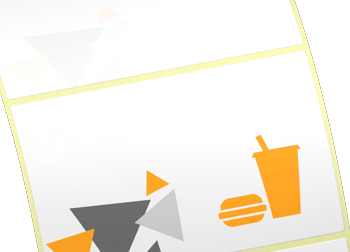 Compliance with guidelines. For many products, the label adhesive must comply with legal requirements. If, for example, food or toys come into contact with labels, it must be ensured that the adhesive used is harmless to health. The applicable guidelines may vary from country to country and, in the case of toys, even an EU standard must be respected.
Compliance with guidelines. For many products, the label adhesive must comply with legal requirements. If, for example, food or toys come into contact with labels, it must be ensured that the adhesive used is harmless to health. The applicable guidelines may vary from country to country and, in the case of toys, even an EU standard must be respected.
To meet all these requirements, a range of different adhesives is essential for label printing. The most common adhesives include:
- Removable adhesives have only a comparatively low final adhesion, that is, the label adheres firmly to the intended surface but can be removed without problem and without leaving any residue.
- Acrylic adhesives are transparent adhesives that are resistant especially to UV rays and high temperatures, making them ideal for outdoor use. Although their initial adhesion is lower than with rubber adhesive, they do not leave any residue when loosened
- Natural rubber adhesive are, as the name implies, made on the basis of natural rubber and moreover usually without the use of solvents. They have a rather viscous structure, which on smooth surfaces causes the adhesive to "bleed" – it swells when applied to the sides of the label – but on rough surfaces, this provides for better adhesion than acrylate adhesives.
- Synthetic rubber adhesives are not free of solvents like the more natural version, which is why they can be used especially as solvent, dispersion and hot melt adhesives.
- Permanent adhesives are used wherever labels are supposed to last. The final adhesion is correspondingly high and the adhesives grip on most surfaces. Conversely, this means of course that once labels are applied with permanent adhesion, they cannot be removed without damage or residue – this is the case with warranty seals for technical equipment, however, completely not intended.
- Deep-freeze adhesives have been specially developed for longer periods in environments with low temperatures – such as refrigerated or frozen counters in food retailers – and therefore guarantee very good label adhesion even on very cold surfaces.
- A secure adhesion on all surfaces
- A secure adhesion in extreme temperatures
- A secure adhesion in dirty, greasy and oily environments
- Seawater resistance when transported on deck
- Residue-free re-detachability
- Suitability for automated industrial identification processes
- Color fastness even with strong UV radiation
- Freedom of migration for food and pharmaceutical products
- Resistance to acids, alkalis and solvents
This offer includes labelling machines, label printers, label dispensers and hand labellers as well as consumables for thermal transfer printing.
7 Print labels - as needed
Our roll labels are printed in two ways; The optimal printing process depends on various factors. The choice has no influence on the quality of the finished product, because digital printing or flexographic printing both provide excellent results. On request, you can also choose from a range of finishes.
7.1 Printing method for label printing
To find the optimal printing method for each job, some questions have to be clarified in advance. Among other things, these are about the order volume, the desired label material, the additional functions of the labels as well as the individual ideas regarding personalization.
With digital printing, for example, roll labels can be created with personalised data such as sequential numbering or individual motifs. However, as soon as the order volume exceeds smaller or medium-sized runs, flexo or offset printing is an option for cost reasons.
Flexographic printing. This is a high-pressure method in which the colours are applied to the material to be printed via a so-called plate cylinder. In this cylinder, the areas that are printed are located higher than the non-printing areas – therefore, only the higher located areas of the printing plate are coloured and only these areas then transfer the colour to the printing substrate. It passes between the plate cylinder and an impression cylinder and thus receives the colored instruction.
This printing technique can be used with almost any material: paper is just as possible as plastic film or cardboard.
Offset printing. Unlike flexographic printing, offset printing is a planographic printing method. Although a printing plate is also used here, it does not have the surface over the different heights. Instead, the offset printing plate is handled so that only the areas that you want to print actually take on the colour. However, the other areas repel the paint.
The printing is also not directly from the printing plate, but the ink is initially applied to a blanket, which is stretched on a roller. Only then the colour is transferred to the substrate. The advantage lies in the precise reproduction of the printed image; because of the relatively high cost, however, increase the cost.
Screen printing. The principle of screen printing is similar to that of offset printing insofar that here also pre-treatment separates printing from non-printing areas. In screen printing, however, the eponymous woven screen is used, through which the ink is transferred to the substrate by means of a squeegee blade. Different mesh sizes are used in this method to control the amount of ink applied – however, in comparison to other printing techniques, the application of ink is considerably higher.
This makes it possible to create particularly opaque areas and certain finishes such as Braille or tactile symbols. In addition to the large amount of ink and the tool costs, however, the restriction to coarse grid is one of the disadvantages of screen printing.
Digital printing. In contrast to the previous methods, digital printing does not require an elastic or static printing plate. The desired print image is transferred directly from the corresponding file to the printer. "Digital printing" is thereby a collective term that refers to different printing methods. The most common are inkjet and laser printing.
The big advantage lies in the possibility of being able to access countless options for personalisation in the digital processing of the print image, on the other hand, even the smallest print runs are affordable with this method.
Thermal printing. In this method, the print image is transferred to a temperature-sensitive material with the assistance of a hot print head. This is passed over a roller onto the hot print heads – the operating mode is therefore more similar to the letter, since the printed image is not fixed as usual by the pressure.
Overall, there are three different methods that fall under the term thermal printing:

- Direct thermal printing requires a special thermo-sensitive paper. The printed image is created on it through its chemical composition, which leads to discoloration when exposed to heat. This means certain limitations: Colour printing is not possible in this way, also the durability is limited because of the heat and light sensitivity of the paper. Nevertheless, direct thermal printing is widespread, especially in the retail sector, where receipts are printed using this method.
- In thermal transfer printing, the heat does not act directly on the paper but rather a special colour ribbon of resin or wax is used. The print head then melts the material onto the substrate – which can be paper or plastic – where it dries in a short time for a long-lasting print image.
- The thermal sublimation printing works in a similar manner to the thermal transfer printing, but with much higher temperatures. Thus, the material of the colour ribbon is not simply melted, but evaporated. The advantage over the transfer printing consists in different colour gradations and the possibility to regulate the applied color quantity by varying the temperature. Colour printing is also possible but this requires four colour ribbons (in cyan, yellow, magenta and black) and multiple runs for each colour.
7.2 Print finishes for labels
Even though our labels meet the highest standards in every respect, from the quality of the materials to perfect printing results, sometimes it can be a bit more. For such cases, we offer a range of different finishes to give your labels the finishing touch.
Hot foil embossing. When it relates to a desired special look or a tactile contrast, a hot foil embossing can provide results which are just as fine as succinct. In this form of finishing, certain places of the label surface are coated or embossed with a wafer-thin colour or metallic foil – hence the common name of such labels as embossed labels.
In this way specific areas of the label can be emphasised visually and haptically, while the glossy foil can emphasise even the most delicate elements. High-quality products, for example from the cosmetics or food industry, can be recognised as such at first glance.
Metal effect. With the high vacuum method, a similar gloss effect can be achieved. However, the feel of the foil embossing is simulated here because the labels are not embossed with metallic foil but rather the surface of the metallised labels is vapour-deposited with a thin metal layer. The result is a high-quality look that is equally convincing in terms of protection and durability.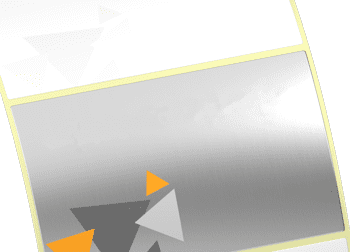
The gloss effect can be even further refined as the metallised labels are easily processed with different printing processes. In this way, the metallic labels are not only a robust security measure, but at the same time as a chic design detail.
Protective laminate. Gloss and protection can also be applied to the labels with a special protective laminate. The transparent protective layer is optionally available in matt or glossy, but both variants ensure that the visual appearance of the labels is particularly pronounced and at the same time long lasting.
Blind embossing. This type of finishing is not about colour accentuation but about the feel, in which certain areas of the label surface are raised. Strictly speaking, this applies only to high-relief embossing, which produces sublime elements that are located higher than the rest of the surface. Deep embossing works precisely the other way round, here the desired elements being lowered.
Nevertheless, both approaches ensure an otherwise unrealisable play with light and shadow through the higher or lower contours. In addition, the label becomes more interesting when being touched, because it is not completely smooth, but can be felt correctly in its individual elements.
Tactile warning triangles. As far as sensing is concerned, labelprint24 offers a special feature that however is less of a tactile enhancement. Rather, it is an important contribution to safety issues in dealing with hazardous substances: So that people with visual impairments or difficulties can easily distinguish dangerous from harmless substances, a tactile warning triangle can be attached as an additional label. It then works in a similar manner to Braille and gives an unmistakable indication to exercise the necessary caution.
Design, refinement and function of labels can be adapted to the individual wishes of our customers in many different ways. Special colours are just as possible as smart labelling, in order to be able to transmit as much information as possible by means of a label in logistics, for example. If optical questions are in the foreground, specially designed barcodes are real eye-catchers that quickly turn a necessary packaging element into a visual unique selling proposition. From simple to noble - with our range and our experience, we fulfill every customer request and create individual and high-quality labels according to your needs.









 Roll labels request form
Roll labels request form  Booklet labels request form
Booklet labels request form  Folding boxes request form
Folding boxes request form  Custom made shipping boxes request form
Custom made shipping boxes request form  Package leaflets request form
Package leaflets request form  Laminate tubes request form
Laminate tubes request form 





















-min.png)






